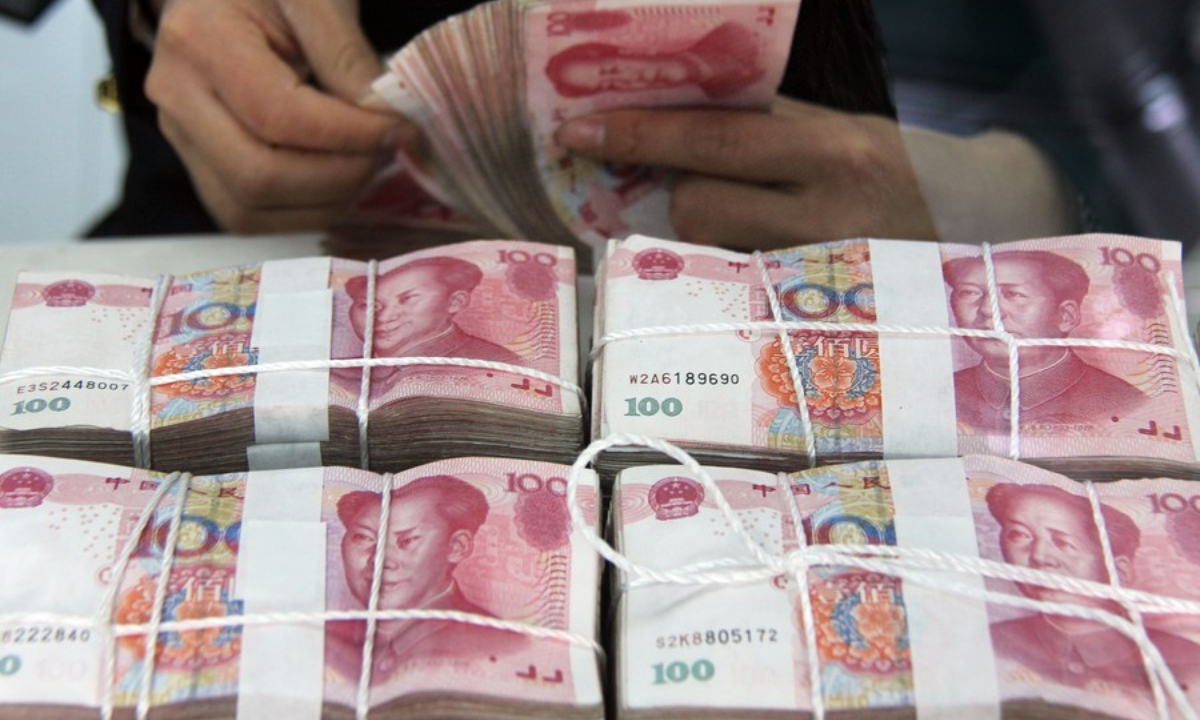
File photo shows a worker counts Chinese currency Renminbi banknotes at a bank in Tancheng County of Linyi City, east China's Shandong Province. Photo:Xinhua
Yuan-denominated assets are gaining favor in the Russian market as bilateral trade gains momentum, a Chinese expert said on Thursday, after Russia's largest bourse predicted that the trading volumes of Chinese yuan and Russian rouble would exceed that of the rouble and the US dollar next year.
Facing sanctions by the US-led West, Russia has been cutting its usage of US dollar and the euro, while increasing settlement in local currencies in foreign trade, Li Xin, director of the Institute for Eurasian Studies at the Shanghai University of Political Science and Law, told the Global Times on Thursday.
The country has not only increased the usage of yuan in the growing trade with China, it has also started to use yuan to settle its trade with other countries and regions, such as India, Li noted.
India's biggest cement producer, UltraTech Cement, reportedly paid in Chinese yuan for a shipment of coal from Russian producer SUEK, Reuters reported on June 29.
In addition to trading settlement, some Russian business giants have started to issue yuan-denominated bonds as well. Russia's largest gold miner, PJSC Polyus, has priced an issuance of 5-year yuan-denominated bonds at a coupon rate of 3.8 percent per annum, with a nominal value of bonds of 4.6 billion yuan ($644 million), according to a statement the company released on August 24.
Less than one month earlier, Russian aluminum company Rusal issued 4 billion yuan-denominated bonds in the Russian market. According to a Reuters report on Thursday, Rusal's director of corporate financing, Alexey Grenkov, told a finance conference that 20 percent of the company's loans were already in yuan.
In August, the trading turnover of yuan against the rouble exceeded 6.9 billion roubles ($118 million), 61 times higher than in last December, the report said, citing data from the Moscow Exchange.
China and Russia have enhanced cooperation in economic and trading areas over recent years. Except for a slight drop in 2020, bilateral trade recorded rapid growth in recent years. In 2021, bilateral trade stood at $146.87 billion, up 35.9 percent year-on-year, and
China remained Russia's largest trading partner for a 12th consecutive year, according to data from China's Ministry of Commerce.
In the first eight months of this year, bilateral trade totaled $117.2 billion, up 31.4 percent year-on-year, according to data from the General Administration of Customs.
It is expected that bilateral trade between Russia and China will hit a new high this year, experts said.
Besides growing trading momentum, it is obvious that the yuan has advantages for Russian businesses seeking alternatives to the US dollar or euro, given China's status as the world's second-largest economy and the largest trading partner for over 120 countries and regions, according to Li.
Aside from Russian businesses, the yuan has also been gaining favor in the international market in recent years, especially in developing countries with Washington repeatedly weaponizing its dollar hegemony to attack others, Li said, predicting that the internationalization of yuan would be enhanced over the long term.
Global Times




